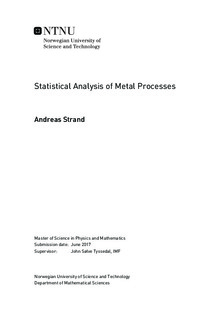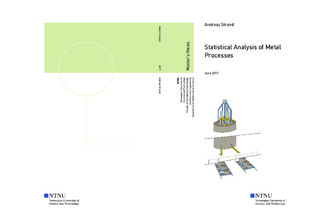| dc.description.abstract | Electric smelting furnaces are complex systems that are not easily explained by a physical or chemical model. However, a statistical model based on observed quantities may be just as good. Among many attemps of modelling metal processes, few are statistical.
A smelting furnace runs without stop and the process varibles are changed on the fly if necessary. There is a lag from a change is made until the process adjusts accordingly. Hence, the statistical model used should incorporate the possibility of lagged relationships.
This thesis describes systems with one ouput variable and several input variables.
Two main approaches for describing a metal process are suggested. Both models are based on correlation between observed variables. The dependence structure in the input variables and the lag in the model decides which model is preferred. The prediction accuracy is assessed for different numbers of variables, number of observations and levels of noise. A real life example is also included. Both methods explains more than half of the variation in the output variable. | |

